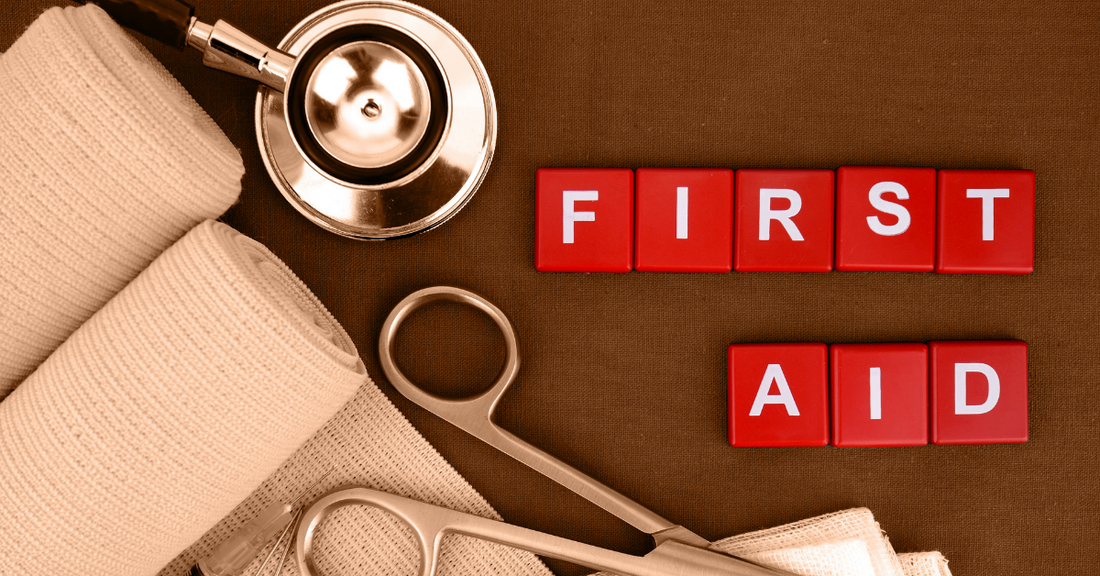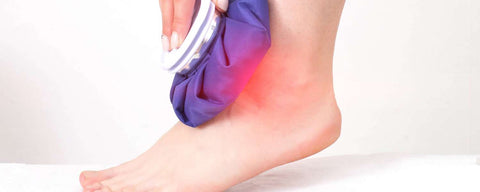
Top 9 First Aid Supplies Every Industrial Worker Needs
Share
Safety is an essential aspect of industrial work. Most jobs in industrial settings involve a high risk of injury. Therefore, industrial workers need to have industrial first aid supplies handy and be appropriately trained in their use.
This article highlights our recommendations for the essential industrial first aid supplies that every industrial worker needs easy access to - whether in they are working from the workshop or from their field service vehicle.
Ten Most Important Industrial First Aid Supplies for Industrial Workers
1. Compression Bandages-

Sprains and strains are common injuries for industrial workers. They are often caused by lifting heavy equipment or using poor lifting techniques.. Strains and sprains are usually accompanied by pain, swelling, and even bruising but can be relieved by using RICE (Rest, Ice, COMPRESSION, Elevation).
Compression bandages are used to satisfy the third step in RICE treatment by using a stretchy bandage to apply pressure to the affected area.
It is important the first aider has received appropriate first aid training to apply a compression bandage so they don’t inadvertently apply too much pressure and cut off blood circulation to the affected limb.
Compression bandages can also be used to stabilise an injured area such as a rib fracture as well as to help treat and prevent edemas (a build up of fluid in the lower legs). Our cohesive bandages and crepe bandages can be used as compression bandages.
2. Sterilised Gauze-

Bleeding caused by cuts or punctures can be deadly if not treated appropriately soon after the injury occurs. The wound should be adequately cleaned with antiseptic.
After that, a sterilised gauze swab should be applied to the wound and fixed in place with adhesive tape or a bandage. A little pressure on the site of the injury can help stop the bleeding.
3. Warm Compresses and Ice Packs-

Warm compresses are used to treat injuries that are more than 48 hours old. The heat from a warm compress helps increase blood flow to the affected area which in turn helps relieve muscle pain and tension.
Cold compresses (also known as ice packs) are used shortly after an injury has occurred to restrict blood flow which in turn reduces bruising, swelling and inflammation.
4. Splints or Slings-

In cases of fracture (or suspected fracture) splints and slings are really important to help stabilise the affected limb and prevent further damage which could be caused by movement.
As soon as the fractured limb has been immobilised the injured person should be taken to the nearest doctor, medical practitioner or emergency department for further assistance.
5. Band-Aids and Plasters-

Band-aids and plasters are one of the most consumed items in industrial first aid kits. They are very useful for keeping cuts, blisters and minor burns clean in an otherwise dirty environment, helping to prevent infection and further damage.
6. Eyewash-

When the worker's task involves risks related to the eyes (e.g. dust, flying objects, chemicals), it is advisable to keep a commercial eyewash handy in case flushing is required.
Any available eyewash should not be expired and should be stored in an easily accessible location. Most eye washes can also be used to clean and flush out wounds making them very handy for industrial workplaces.
7. Tweezers-

These are used to remove splinters of wood or glass or any other small debri item that enters the skin and causes pain, inflammation or infection.
8. Bandages and Dressing Items-

Bandages and dressings have various uses and are essential in industrial first aid supplies. They can be used to apply antiseptics, ointments and to help clean wounds as well as to protect open wounds from further injury. Therefore, bandages and dressings are an integral part of the first-aid kit that every worker should have readily accessible.
9. Trauma Dressings-

Trauma dressings (also known as a trauma bandage) consist of durable elastic wrap, a dependable securing device and a sterile non-adherent pad.
Trauma dressings are primarily designed to apply direct pressure to a deep wound to prevent blood loss but they can also be used to secure splints, act as a sling, or be applied in any other situation that would benefit from an elastic wrap.
It is important to note that good first aid requires trained people to provide assistance and not cause further injury.
A good First Aid Training course will provide industrial workers with the knowledge they need to use basic industrial first-aid supplies and other first aid kit items, and improve their colleagues chances of a full recovery in their time of need.
